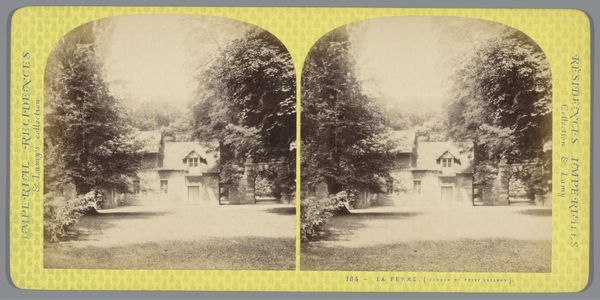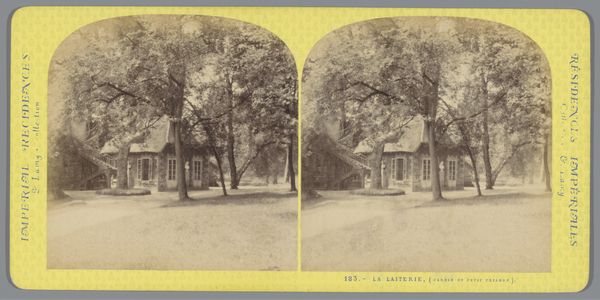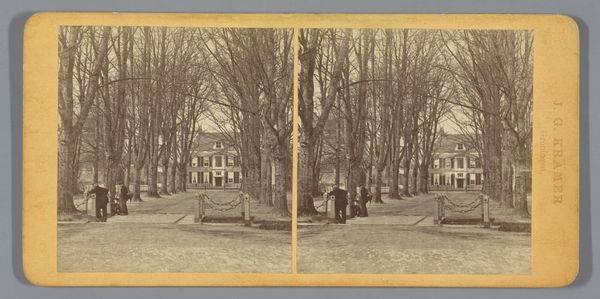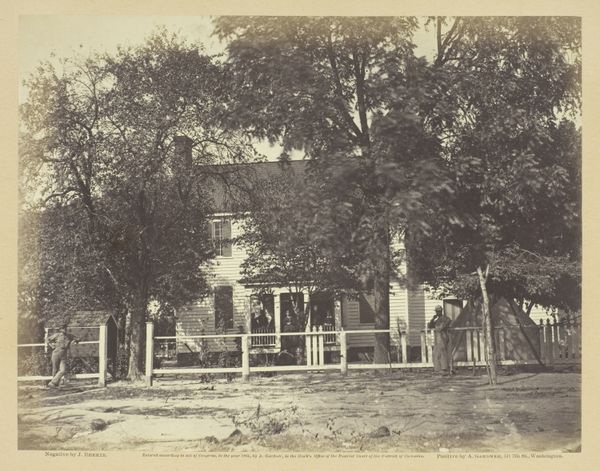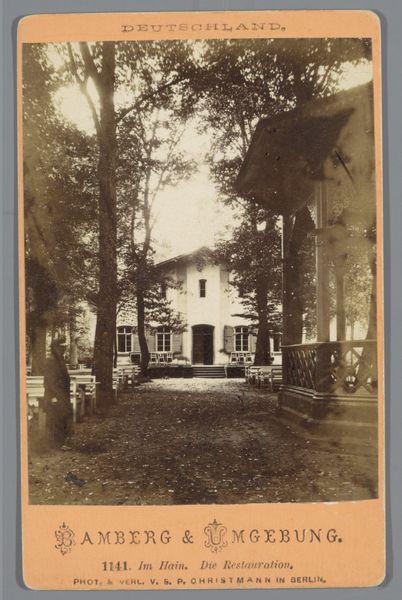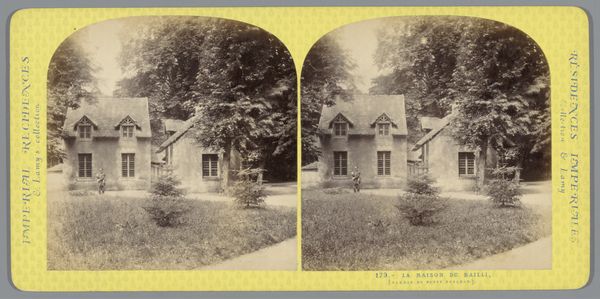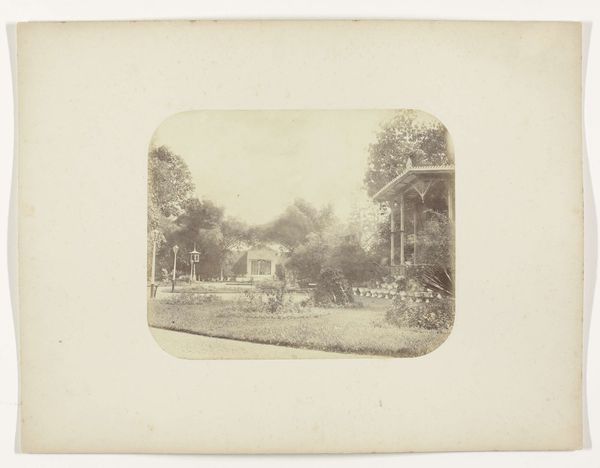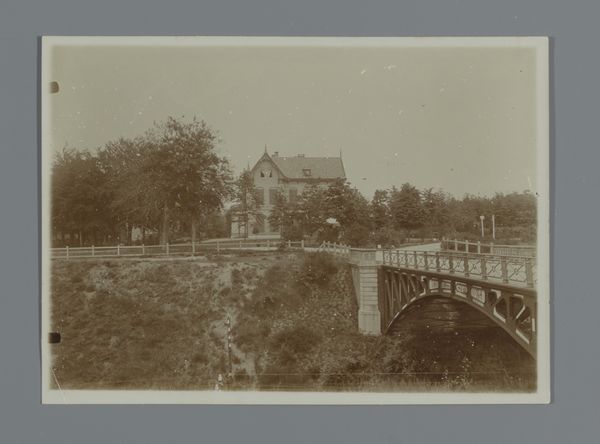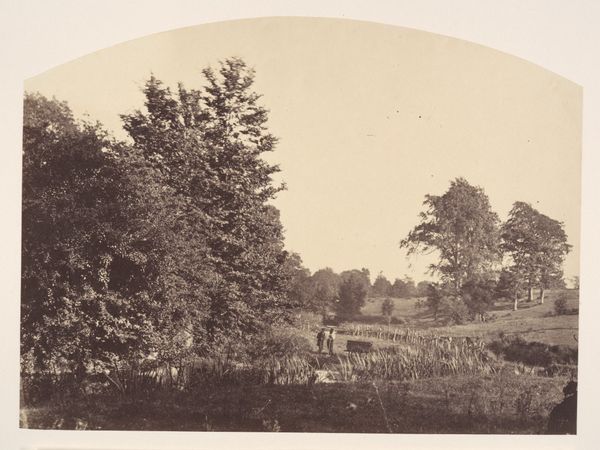
photography, albumen-print
#
landscape
#
photography
#
coloured pencil
#
hudson-river-school
#
watercolor
#
albumen-print
#
realism
Dimensions: image/sheet (each): 7.8 × 7.7 cm (3 1/16 × 3 1/16 in.) mount: 8.4 × 17.6 cm (3 5/16 × 6 15/16 in.)
Copyright: National Gallery of Art: CC0 1.0
Editor: This albumen print, "Yosemite Hotel" by Eadweard Muybridge, was created in 1867. There’s a stillness in this stereoscopic image – it captures this moment with amazing clarity, the hotel nestled peacefully amidst the trees, nature feels close. What strikes you when you look at it? Curator: The creation of images like this one are deeply intertwined with the concept of Manifest Destiny and the expansion of American territories, particularly in the West. Muybridge was participating in visually claiming and marketing these newly accessible landscapes. Consider the choice of "Yosemite Hotel" as the subject. Why focus on a site of accommodation for tourists rather than, say, a purely natural vista? Editor: Hmm, interesting. So, you are suggesting the photograph is as much about promoting tourism and development as it is about celebrating the natural beauty of Yosemite? Curator: Precisely! Think about who would be purchasing this stereoscopic image. It was an emerging middle class with the means to travel or, at the very least, to dream of travel. This image presents a romantic, easily digestible vision of the West, framing nature as accessible and tamed by human presence - the hotel. It's subtly encouraging the viewer to imagine themselves there, experiencing this "wild" landscape in comfort. Editor: I see now. It’s less about pure landscape and more about carefully crafting an experience, a sort of palatable wilderness, designed to be consumed. What about the indigenous populations though? Curator: Exactly! And the near-total absence of indigenous representation is telling. This "untouched" wilderness is, of course, a politically loaded fiction that was necessary to erase the violent realities of westward expansion and the displacement of native peoples. These images, distributed widely, helped to solidify this narrative. Editor: I hadn't considered the role photography played in shaping perceptions of the West. It definitely makes me look at images like this differently. Curator: That's the point. Photography doesn’t simply document; it participates in constructing reality. Recognizing those underlying power dynamics is critical to understanding the art of any period.
Comments
No comments
Be the first to comment and join the conversation on the ultimate creative platform.
